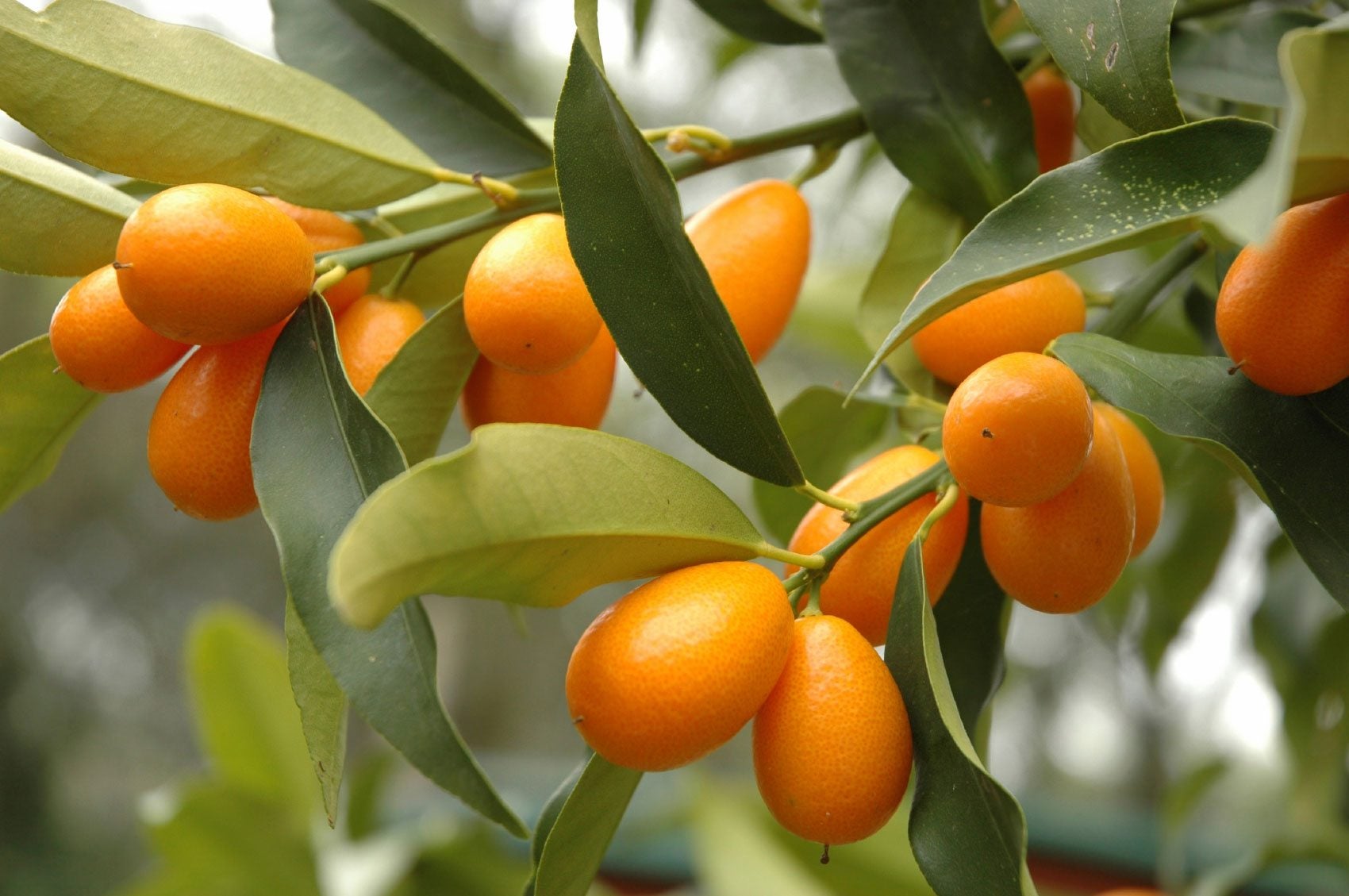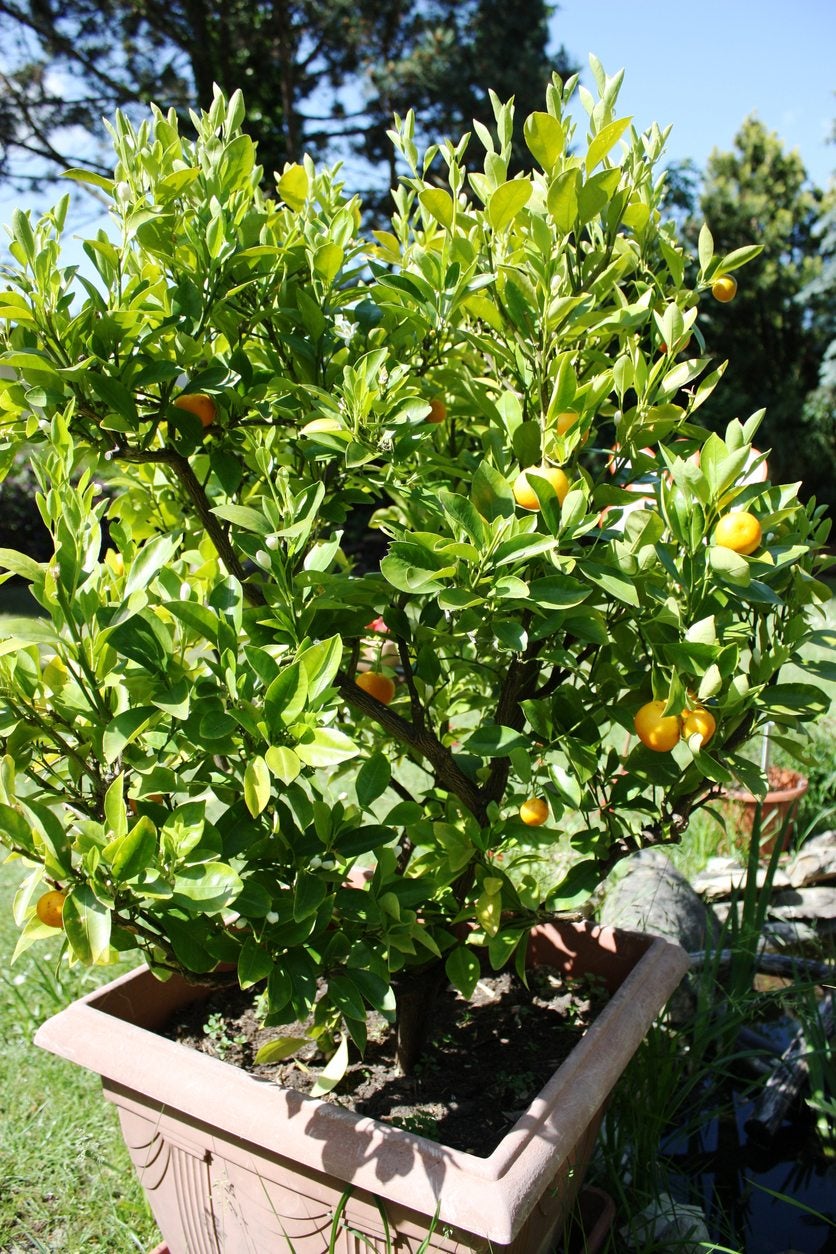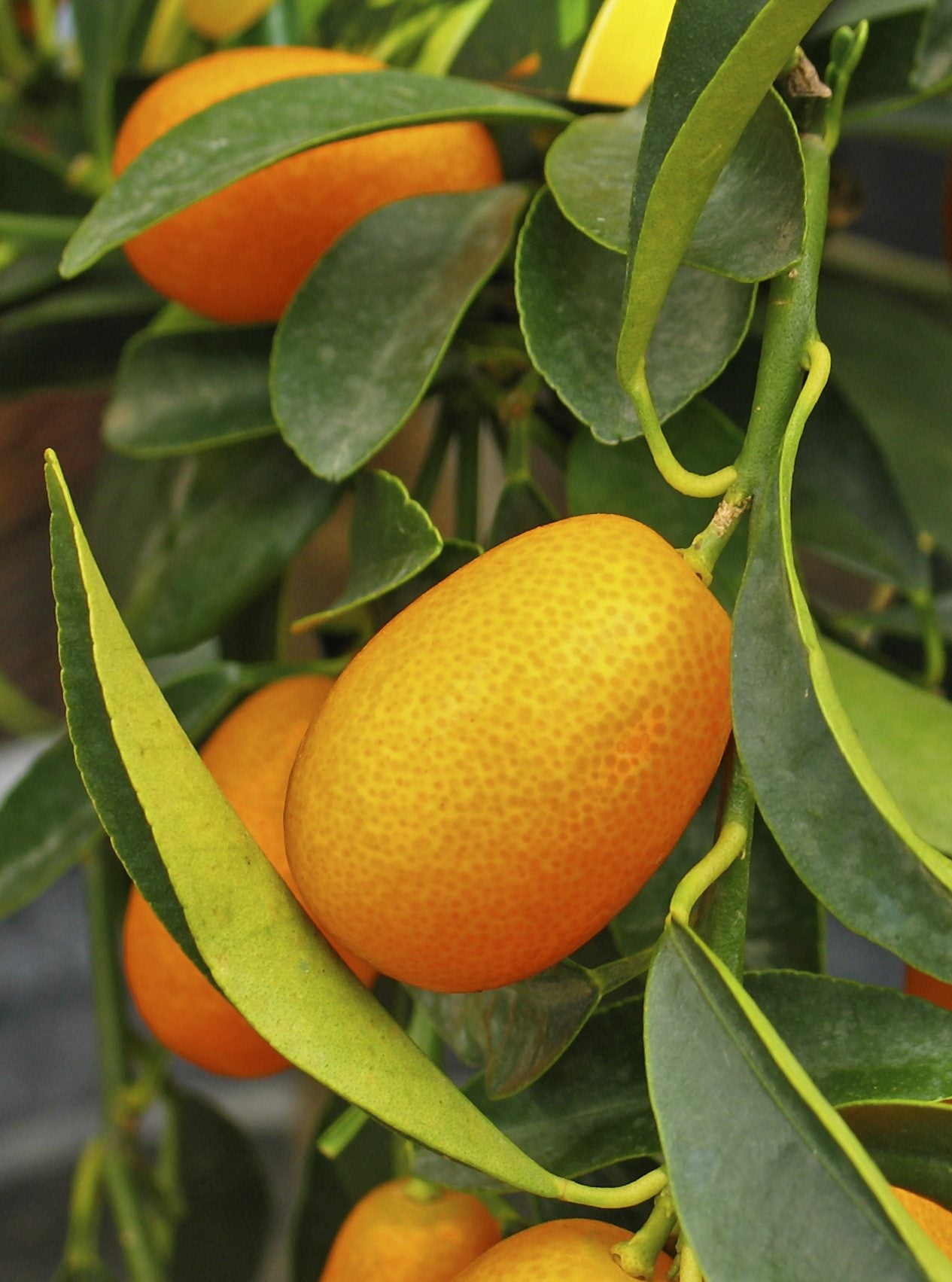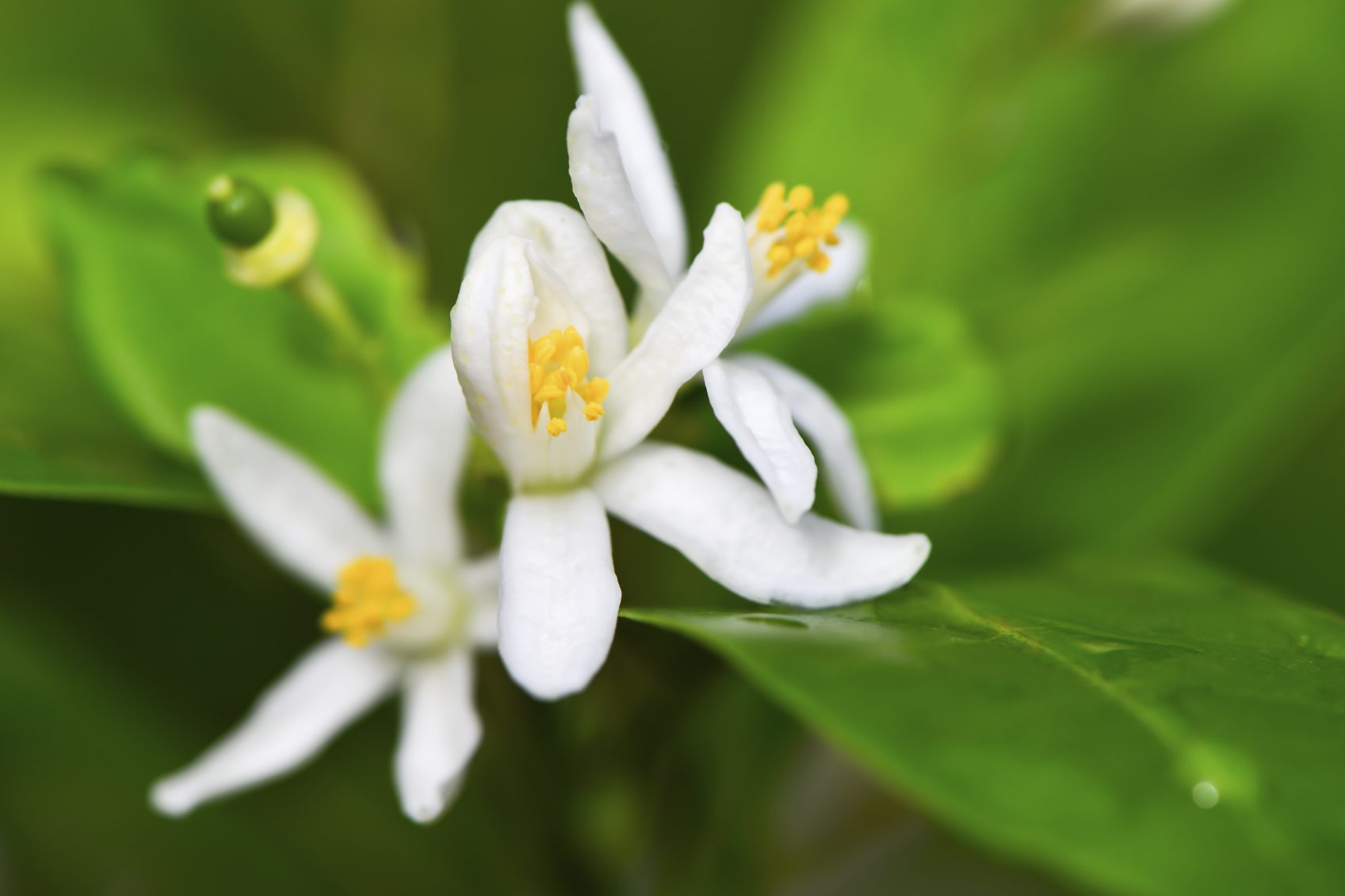Kumquat Tree Care: Tips For Growing Kumquat Trees


Kumquat (Fortunella japonica syn. Citrus japonica), sometimes spelled cumquat or comquot, is a small, citrus fruit that grows in climates too cool for other citrus plants. The fruit is sweet and tart at the same time and is eaten without removing the peel. If you are interested in trying your hand at growing kumquat trees, you should gather as much kumquat tree info as possible to avoid any kumquat tree problems later down the road.
Kumquat Tree Info
Kumquats grow on evergreen trees and are native to China. They reach heights of 8 to 15 feet (2 to 4.5 m.) and have a vase-like or rounded canopy. In spring, you'll be treated to showy, fragrant white flowers. The trees are self-fertile, so you'll only need one to produce fruit. Growing kumquat trees is easy.
They need full sun and tolerate any soil pH and most soil types as long as the soil is well-drained. They also tolerate seaside conditions. Kumquat trees are suitable to USDA plant hardiness zones 9 and 10, and withstand winter temperatures as low as 18 F. (-8 C.).
Kumquat Tree Care
As part of your kumquat tree care, you should keep the soil moist around young trees, but not wet or soggy. Once the tree is established, water during dry spells. Withhold fertilizer for the first two or three months. Use a fertilizer designed for citrus trees thereafter, following the label instructions.
Use a layer of mulch over the root zone to help the soil hold moisture and inhibit weeds that compete with the tree for moisture and nutrients. Pull the mulch back several inches (7.5 to 12.5 cm.) from the trunk of the tree. Kumquat trees don't require pruning except to remove suckers that drain the tree's resources.
If you want to prune to shape the tree, do so after you harvest the fruit but before the flowers bloom in spring.
How to Care for Kumquat Trees in Containers
Kumquat trees don't tolerate being root bound, so you will need a very large pot. Drill extra large drainage holes in the bottom of the pot, and cover the holes with a window screen to keep the soil from falling through.
Gardening tips, videos, info and more delivered right to your inbox!
Sign up for the Gardening Know How newsletter today and receive a free copy of our e-book "How to Grow Delicious Tomatoes".
Raise the pot off the ground to improve drainage and air circulation. Kumquat trees in containers need extra protection during freezing weather because of the exposed roots. Cover them with a blanket when frost threatens.
Kumquat Tree Problems
Kumquat trees are susceptible to root rot diseases. Avoid excess moisture and make sure the soil is well-drained before planting. Avoid piling mulch around the base of the tree. Aphids and scale insects sometimes attack the tree. Natural predators usually keep these insects from becoming a serious problem.
You can use insecticidal soaps as a contact insecticide and horticultural oils early in the season. Follow the insecticide labels exactly, and store unused portions in their original container and out of the reach of children.

Jackie Carroll has written over 500 articles for Gardening Know How on a wide range of topics.
-
 Looking For Plants To Give You The Soft And Fuzzies? Try These 5 Fuzzy Leaf Plant Options
Looking For Plants To Give You The Soft And Fuzzies? Try These 5 Fuzzy Leaf Plant OptionsLovers of texture, drama, silver foliage and tactile plants will adore these special sensory garden additions. These fuzzy leaf plant options will leave you all aglow
By Susan Albert
-
 Get Ready For A Summer Of Hummers! Grow These Full Sun Hummingbird Plants and Flowers
Get Ready For A Summer Of Hummers! Grow These Full Sun Hummingbird Plants and FlowersIf you’re lucky enough to enjoy a sunny backyard, make sure you are maxing out on your pollinator opportunities and grow these full sun hummingbird plants and flowers
By Tonya Barnett
-
 Planting Kumquat Trees In Containers: Growing Kumquat Trees In Pots
Planting Kumquat Trees In Containers: Growing Kumquat Trees In PotsOf the citrus, kumquats are fairly easy to grow, and with their smaller size and few to no thorns, they are perfect for kumquat container growing. You can easily move them out of frigid temperatures to protect them during cold snaps too. Learn more here.
By Amy Grant
-
 Picking Kumquats – Tips On Harvesting A Kumquat Tree
Picking Kumquats – Tips On Harvesting A Kumquat TreeOriginally native to China, three varieties of kumquat are grown commercially in the United States and you can too if you live in the right climate. So when is kumquat harvest season and how do you harvest kumquats? Click here to learn more.
By Amy Grant
-
 Kumquat Not Flowering: How To Get Blooms On A Kumquat Tree
Kumquat Not Flowering: How To Get Blooms On A Kumquat TreeKumquats are prized for both their edible components and their ornamental value. So what happens when they fail to bloom? This article will help explain why this happens and what, if anything, can be done to get your kumquat to flower.
By Karen Boness